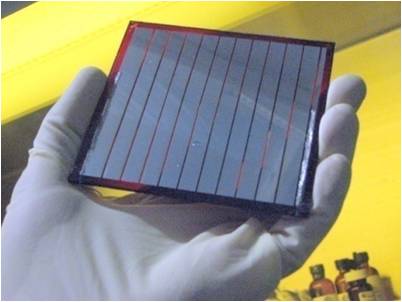A team from the Southern University of Science and Technology in China has designed a small molecule donor that can act as a third component in ternary organic cells. It helped achieve an energy conversion efficiency of 18.26% when fabricated with a PM6:BTP-eC9 organic solar cell.
Scientists from Shenzhen Southern University of Science and Technology in China have designed and synthesized a dimerized small molecule donor for ternary organic solar cells.
In the research paper “Dimerized small molecule donor enables efficient ternary organic solar cells”, published in the magazine Giantthe researchers explained that ternary organic solar cells are the “feasible and efficient strategy” to achieve high-performance organic cells, but emphasized the need to develop a third component to maximize efficiency.
The dimerized small molecule donor presented in this work, DSMD-βV, was prepared by connecting two asymmetric small molecule donors to the vinyl group. “An asymmetric small donor with a bromine-substituted end group, called compound, was obtained through a series of ingenious synthesis strategies,” the scientists said. “The compound was then coupled to vinyl to synthesize the target product DSMD-βV via a Stille coupling reaction, using Pd2(dba)3 as catalyst and P(o-tol)3 as ligand.”
DSMD-βV, an oligomeric molecule, is considered by the scientists as a suitable third component for its absorption, as it showed a wide absorption range from 350 to 800 nm, and its energy level was similar compared to PM6 and BTP-eC9. The team added the introduction of DSMDβV can also improve the phase separation of PM6:BTP-eC9-based film morphology.
To test the dimerized small molecule donor, the scientists fabricated a solar cell composed of DSMD-βV and a PM6:BTP-eC9 system as the binary matrix. In testing, they found that the PM6:DSMD-βV:BTP-eC9 ternary organic cell device recorded an energy conversion efficiency of 18.26%, compared to a result of 17.63% in a PM6:BTP-eC9 based binary cell .
The study highlighted that the ternary device with DSMD-βV also achieved more effective exciton dissociation, suppressed trap-assisted recombination, promoted charge transfer, inhibited charge recombination, and improved carrier lifetime and extraction time compared to the reference binary device.
“This work indicates that the dimeric small molecule donor is a promising third component candidate for the construction of efficient ternary organic solar cells,” the researchers concluded, “which also opens a unique idea for the construction of efficient ternary organic solar cells.”
This content is copyrighted and may not be reused. If you would like to collaborate with us and reuse some of our content, please contact: editors@pv-magazine.com.


